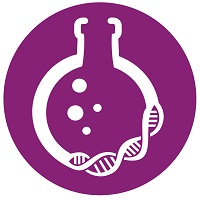Bioanalytics
Symposium: AI/ML in Bioanalysis
Machine Learning to Streamline Chiral SFC Method Development
Monday, November 10, 2025
9:00 AM - 9:30 AM CT
Location: 221 CD

Ines Santos, PhD (she/her/hers)
Principal Scientist
Bristol-Myers Squibb
Princeton, New Jersey
Speaker(s)
Artificial intelligence (AI) and machine learning (ML) are transforming pharmaceutical research & development (R&D) by automating many critical activities, shortening drug development times and increasing efficiency. AI/ML techniques are currently being used to enhance multiple areas of R&D, including small molecule drug candidate design & selection via better understanding of target engagement, and identification of novel biomarkers. These techniques can also have a positive impact on bioanalysis of chiral drugs by enhancing and accelerating method development. Chiral separation is a critical component of bioanalytical study support, as two enantiomers of a chiral compound often exhibit different pharmacokinetic (PK)/pharmacodynamic (PD) properties, leading to different therapeutic/toxicological effects. Traditional chiral method development using liquid chromatography (LC), or supercritical fluid chromatography (SFC) can be time-consuming and resource intensive. To address this issue, a novel deep learning-based model was developed for accurately prediction of chiral chromatography columns & conditions. The goal of this quantitative model is to increase throughput for bioanalysis while saving time and resources.
A graph convolutional network combined with ListNet was employed, framing the machine learning problem as a hybrid of classification and learning-to-rank tasks. A screening data of 267 unique chemical structures was used to train the model and demonstrate its high predictive performance and ability to refine predictions through online/active training with new data. This refinement occurs on a second’s timescale, marking the first example of an interactive algorithm that recommends chiral chromatography conditions in real-time as new data becomes available.
By analyzing experimental enantioresolution data along with complex chiral recognition mechanisms, this ML model could provide valuable insights for chiral separation and recommendations on chiral columns for starting LC/SFC assays, needed for future chiral drug candidates. This innovative approach has the potential to significantly accelerate the development of chiral separation methods, reduce experimental costs, and increase the throughput in the bioanalysis of development compounds.
A graph convolutional network combined with ListNet was employed, framing the machine learning problem as a hybrid of classification and learning-to-rank tasks. A screening data of 267 unique chemical structures was used to train the model and demonstrate its high predictive performance and ability to refine predictions through online/active training with new data. This refinement occurs on a second’s timescale, marking the first example of an interactive algorithm that recommends chiral chromatography conditions in real-time as new data becomes available.
By analyzing experimental enantioresolution data along with complex chiral recognition mechanisms, this ML model could provide valuable insights for chiral separation and recommendations on chiral columns for starting LC/SFC assays, needed for future chiral drug candidates. This innovative approach has the potential to significantly accelerate the development of chiral separation methods, reduce experimental costs, and increase the throughput in the bioanalysis of development compounds.
Learning Objectives:
- Describe how AI and machine learning are transforming pharmaceutical research and development, specifically in drug candidate selection and biomarker identification.
- Explain the significance of chiral separation in bioanalysis, including the impact of enantiomer pharmacokinetics and pharmacodynamics.
- Identify the challenges associated with traditional chiral method development using LC and SFC techniques.
- Summarize the design and application of deep learning models in predicting chiral chromatographic conditions for bioanalytical methods.
- Evaluate the benefits of real-time, machine learning-driven recommendations in accelerating chiral separation method development and improving bioanalytical throughput.

